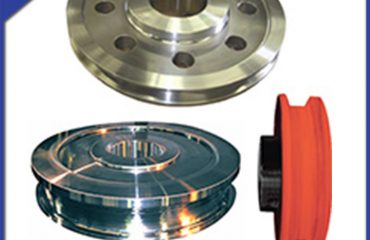
Proper maintenance of weld neck flanges is crucial in achieving cost savings for industries that rely on these components for their piping systems. Weld neck flanges are widely used in industries such as oil and gas, petrochemical, and power generation, where they provide a secure connection between pipes or valves.
One of the key reasons why proper maintenance is important is to prevent leakage. Any leakage in the piping system can lead to significant costs in terms of lost product, environmental damage, and potential safety hazards.
To achieve cost savings through weld neck flange maintenance, the following steps should be taken:
Regular Inspection: Regular visual inspection of weld neck flanges should be carried out to identify any signs of damage or wear. This can include checking for cracks, corrosion, or deformation in the flange body or sealing surfaces. Inspections should also include a check for proper alignment and tightness of bolts.
Cleaning: The flange sealing surfaces should be cleaned thoroughly to remove any debris or contaminants that may compromise the integrity of the seal. This can be done using appropriate cleaning agents and tools. Proper cleaning helps maintain the flange’s sealing effectiveness and prevents leakage.
Lubrication: Applying a suitable lubricant to the flange bolts and threads is essential for proper tightening and easy removal during maintenance or replacement. This improves the overall performance of the flange and reduces the risk of damage during operation.
Tightening: Flange bolts should be tightened to the recommended torque specifications to ensure a proper and secure connection. Under-tightening can result in leakage, while over-tightening can cause deformation or damage to the flange. Proper torque wrenches or tensioning equipment should be used to achieve the correct tightening.
Gasket Replacement: Gaskets play a vital role in preventing leakage at the flange connection. Over time, gaskets can wear out or degrade, leading to leaks. Regular inspection should be carried out, and gaskets should be replaced as necessary to maintain an effective seal.
Environmental Considerations: Many industries operate in harsh or corrosive environments that can accelerate the deterioration of weld neck flanges. Taking appropriate measures to protect the flanges from corrosive agents or extreme temperatures can extend their lifespan and prevent costly failures.
Training and Education: Providing proper training to maintenance personnel is essential for ensuring that maintenance tasks are carried out correctly. This includes proper handling, installation, and maintenance techniques specific to weld neck flanges. Well-trained personnel are more likely to detect and address issues promptly, ultimately saving costs in the long run.
Document and Track Maintenance: Keeping a detailed record of all maintenance activities, including inspections, repairs, and replacements, is important for tracking the condition of weld neck flanges. This information can help identify patterns of failure, fine-tune maintenance schedules, and make informed decisions regarding repair or replacement.
By following these maintenance practices, industries can achieve cost savings through improved reliability and reduced downtime. Proper maintenance of weld neck flanges ensures their optimal performance and extends their lifespan, minimizing the need for premature replacements and repairs. Additionally, preventing leakage reduces product loss, environmental damage, and associated cleanup costs.
In conclusion, achieving cost savings through proper weld neck flange maintenance requires regular inspection, cleaning, lubrication, tightening, gasket replacement, environmental considerations, training, and documentation. By implementing these practices, industries can maximize the performance and lifespan of the flanges, leading to reduced maintenance costs and improved overall efficiency of piping systems.
 Language
Language Espanol
Espanol English
English Italian
Italian عربى
عربى
 Skype: chinamaker99
Skype: chinamaker99  Tel: 86-316-5120812
Tel: 86-316-5120812 Email:
Email:  Whatsapp:
Whatsapp: 
